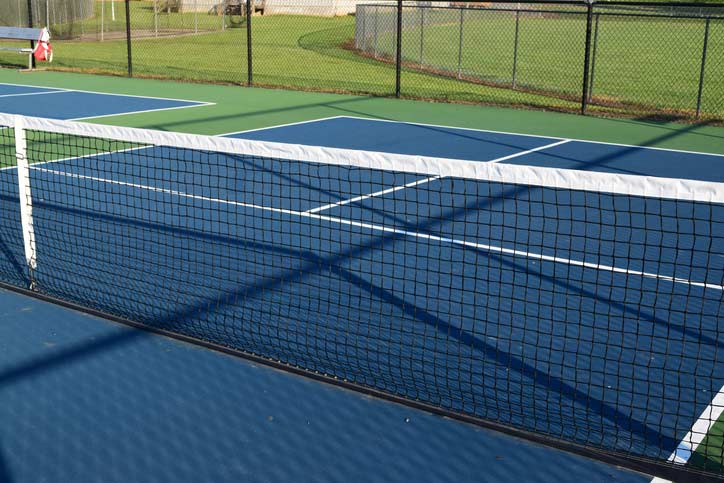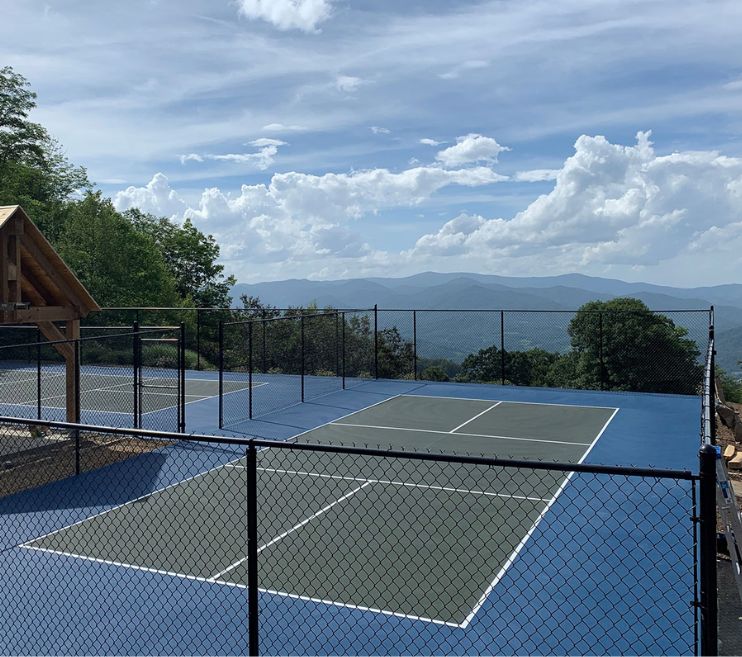Why Investing in a Skilled Pickleball Court Contractor is Critical for Your Sports Complicated
Why Investing in a Skilled Pickleball Court Contractor is Critical for Your Sports Complicated
Blog Article
A Comprehensive Overview to Designing the Perfect Pickleball Court for All Skill Levels
Creating a pickleball court that caters to players of differing ability levels requires a complex technique, encompassing crucial aspects such as court dimensions, surface materials, and ease of access functions. What certain factors to consider must be prioritized to make certain an effective application?

Understanding Court Dimensions
Comprehending the measurements of a pickleball court is important for both designers and players, as these requirements guarantee a fair and consistent having fun experience. A common pickleball court gauges 20 feet broad by 44 feet long for both songs and increases play. The court is divided into 2 equal halves by a web that stands 36 inches high at the sidelines and 34 inches at the facility.
Key functions of the court include the non-volley zone, generally described as the "kitchen," which prolongs 7 feet from the net on both sides. This area is important for controling player activity and volleying, making certain critical play. Additionally, the solution areas on each side of the court are necessary, measuring 10 feet broad and 15 feet deep, designed to suit appropriate serving methods.
Surrounding the court, a location of at least 10 feet must be assigned as the safety area, allowing gamers sufficient area to relocate and prevent injuries throughout play. Adhering to these dimensions not just fosters fair competitors yet also advertises safety and security and satisfaction for all participants, making it vital for any type of pickleball court design.
Choosing the Right Surface
The option of playing surface area for a pickleball court substantially affects the video game's characteristics and player experience. Choosing the suitable material is crucial for making certain gamer convenience, safety and security, and efficiency. Usual surfaces include asphalt, concrete, and specialized sporting activities flooring.
Asphalt is a preferred selection as a result of its cost and longevity. It provides a consistent having fun surface however can be difficult on joints over extended play. Concrete, while similar in sturdiness, provides marginal versatility, possibly resulting in raised effect on players' bodies.
For a more supported experience, many centers go with specific sports floor covering, such as artificial surfaces or modular floor tiles. These products usually include shock-absorbing residential or commercial properties, decreasing the danger of injuries and improving gamer comfort. Such surfaces can enhance ball bounce consistency, which is necessary for fair play.
When picking a surface, take into consideration aspects such as environment, upkeep demands, and the strength of play. An appropriate surface not just enhances gameplay however likewise contributes to the durability of the court itself. Eventually, recognizing the nuances of different products will certainly assist in developing an optimum pickleball setting tailored to various ability levels.
Optimum Court Design
An ideal court design is essential for optimizing both player efficiency and viewer satisfaction in pickleball. The measurements of a typical pickleball court are 20 feet large by 44 feet long for increases play, preserving a clear border that boosts gameplay. The web, placed at 36 inches high at the sidelines and 34 inches in the center, is important for maintaining the dynamics of the video game.
Incorporating assigned locations around the court for players to relocate freely is essential. A minimum of 10 feet of clearance on all sides of the court is recommended to stop accidents and give room for viewers. In addition, positioning plays a significant role; the court needs to preferably be lined up north-south to reduce the impact of sun glow on players throughout peak hours.
Clear and noticeable court markings aid in gameplay, with contrasting colors for boundaries and non-volley areas that delineate vital locations for players. In general, a properly designed court layout cultivates an engaging atmosphere for both spectators and players.

Accessibility Factors To Consider
When designing a pickleball court, making certain accessibility for all gamers, including those with disabilities, is paramount. An attentively developed court can cultivate inclusivity and motivate participation from individuals of differing capabilities.

Accessibility routes to the court need to additionally be meticulously planned. Make sure that paths causing the court are vast sufficient for mobility device customers and are geared up with ramps where required. Signage ought to be big and clear enough to be quickly checked out.
Additionally, seating areas ought to be developed to enable easy accessibility to and from the court. This includes offering designated spaces for view spectators who may have flexibility obstacles.
Lastly, ensure that toilet centers nearby fulfill ease of access requirements. By thinking about these components, you can produce a pickleball court that rates and usable for every person, thus advertising a vibrant and varied community of players.
Upkeep and Maintenance
Proper upkeep and maintenance of a pickleball court are vital for ensuring ideal having fun problems and prolonging the life expectancy of the center. Regular evaluations must be performed to recognize and address any damages or use, such as fractures in the surface area or loosened netting. These concerns, if left neglected, can adversely influence gameplay and safety and security.
Surface area maintenance is vital; courts must be cleansed often to eliminate debris, leaves, or dirt that can impact traction. For difficult courts, periodic pressure cleaning is advised to keep surface area stability and looks. If your court is made from softer products, such as asphalt, resurfacing or securing may be required to safeguard against weather-related wear.
In addition, internet height and tension need to be examined on a regular basis, as incorrect settings can change gameplay. Preserving bordering locations, including secure fencing and lights, is equally vital for making certain a delightful and safe atmosphere.
Conclusion
In conclusion, the design of an ideal find out pickleball court demands a precise technique that incorporates correct dimensions, ideal surface materials, and thoughtful design. By sticking a knockout post to these standards, the best pickleball court can be produced, promoting pleasure and athletic advancement for players of differing skill levels.
Designing a pickleball court that provides to players of varying ability degrees requires a multifaceted method, including vital elements such as court measurements, surface materials, and access attributes.Comprehending the measurements of a pickleball court is important for both designers and players, as these requirements ensure a reasonable and constant playing experience.The option of playing surface area for a pickleball court dramatically influences the video game's characteristics and gamer experience.An ideal court format is crucial for taking full advantage of both player efficiency and viewer enjoyment in pickleball. By adhering to these guidelines, the perfect pickleball court can be developed, promoting pleasure and sports growth for players of differing ability levels.
Report this page